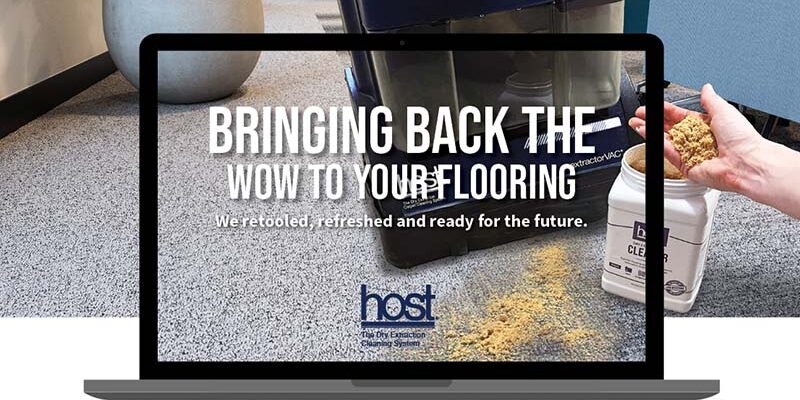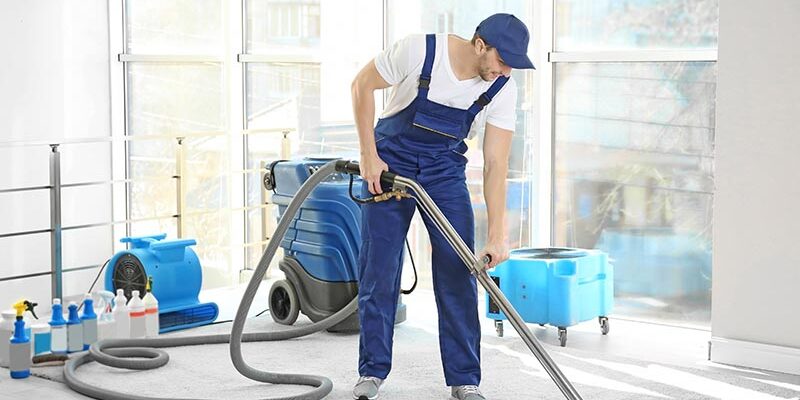Exploring encapsulation for upholstery
The theory of encapsulation and the method employed to use this on upholstery is not new… it is gaining in popularity in today’s cleaning market.
Many years ago, in the infancy of my upholstery cleaning days, Ed York demonstrated to me what he said would be the upholstery cleaning method of the future.
In his demonstration, he used what looked like a heavy duty, variable speed drill with a brush on the business end.
He used this to agitate the cleaning solution he had sprayed on a sofa.
Although this system never became as popular as Ed envisioned, an increasing number of cleaners are using a similar process to bring encapsulation cleaning to upholstery.
Step by step encapsulation procedures
- As with any upholstery cleaning, begin with a thorough inspection for pre-existing conditions. You wouldn’t want to get blamed because the couch is missing a leg.
- Test for the possibility of bleeding. Even though encapsulation is a low moisture method, the fabric will get damp. Check the integrity of the fabric. Age, sunlight, body oils, use, and other factors may have weakened the fabric. Agitation can tear delicate fabrics or those with existing weakness. Decide if the fabric is an appropriate candidate for encapsulation cleaning.
- Thoroughly vacuum the face of the fabric and crevices.
- Apply an encapsulating cleaning agent (check with your supplier for a specific product). This may be done by spraying or whipping the cleaner into foam and applying with a sponge or a horse hair brush. The foam method uses even less moisture and might be appropriate for cleaning natural fibers.
- Clean the cushions and place them tee-pee style on a drop cloth or white paper.
- Tip the chair or sofa forward so that the outside back is now up and horizontal. This makes the surface easiest to clean, with a minimum of bending. Follow a similar procedure to clean the outside arms. Finally, tip the piece backward to clean the inside back.
- Agitation may be provided by a horse hair brush or using either a pad or bonnet attached to a variable speed drill.
- Use cotton towels to remove foam and soil (this step is eliminated by some cleaners). In some cases, a rinse using hot water extraction is the final step. This removes the encapsulation cleaner before it has an opportunity to cure.
- The final step in true encapsulation is the vacuuming. After the above procedures are accomplished, someone has to vacuum the crystallized encapsulant and attached soils. This can be done by the cleaner during the job if he is at the location long enough (if he cleans the upholstery first and then the carpets).
The questions
<align=”justify”> Although encapsulation for commercial carpets has achieved acceptance quickly, a number of questions remain about applying this process to upholstery.
These questions are currently being worked on by many manufacturers and formulators of cleaning systems and chemistry.
Products designed for use on carpets are formulated with surfactant types and levels to allow the product to penetrate carpet pile much thicker than upholstery fabric.
When used on upholstery, are these products likely penetrating through the fabric into the filling material, foam or wood?
Could this adversely affect drying times, wick back, bleed through wood stain, marker or soils below the fabric?
These are questions that will be answered in the future as pros and cons of this system are worked out.
The chemistry
<align=”justify”> Encapsulators surround the soil as they cure. After drying, the encapsulated soil should be vacuumed away. If the product is left in the material to dry, who is going to do the vacuuming?
Will the cleaner return later to do this step? Can the homeowner or maintenance staff of a commercial property be counted on to take on this assignment?
Toweling off seems to be too little extraction and at the wrong time for encapsulation.
A hot water extraction rinse following an encapsulating prespray and agitation produces good results, but takes the encapsulating step out of encapsulation cleaning.
Another method of attack is to apply and agitate the chemistry into the piece (as outlined above) and use hot water extraction with a specialized encapsulating rinse.
This way, you have the benefits of the agitation and chemistry of typical encapsulation, along with hot water extraction flushing.
Special thanks to Gary Heacock, Jim Pemberton, and Lonnie McDonald for contributing information for this article.
Scott Warrington has more than 35 years of experience in the carpet cleaning industry and related fields. He serves as the technical support specialist for Bridgepoint Systems and Interlink Supply.












